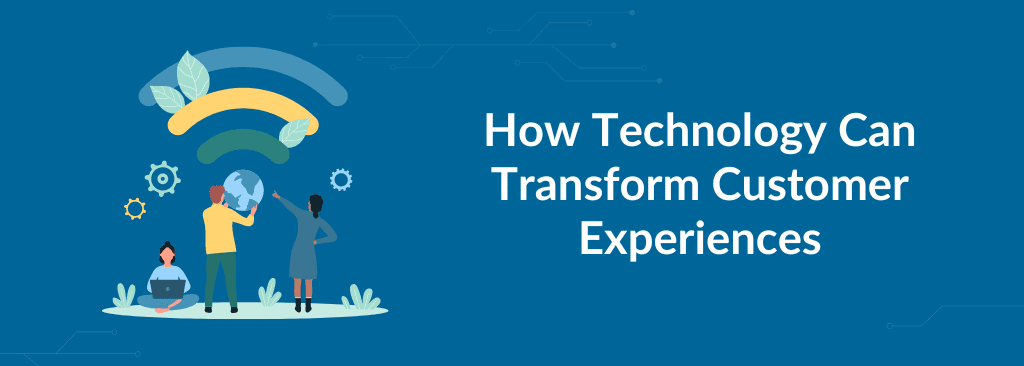From Frustration to Fulfillment: How Technology Can Transform Customer Experiences
Moving to a new home should be an exciting experience. Still, it turned into a frustrating ordeal for me due to the poor customer experience provided by one of my internet service providers.
Upon moving, I promptly contacted both of my internet providers to request the transfer of my connections to my new location. While one provider efficiently handled my request and ensured a smooth transition, the other provider claimed they could not offer service at my new address.
Accepting their limitation, I requested the termination of my connection and a refund of the initial deposit I had paid. Little did I know this simple request would spiral into a series of frustrating interactions and unnecessary hurdles.
After submitting my termination request, I was contacted by a representative from the disconnection team to confirm my request. Despite clearly explaining the situation and my desire to terminate the service, I was confused as the representative suggested they could still provide service at my new location.
Feeling hopeful, I agreed to a relocation request, only to be disappointed again when a technical team member informed me that service was not available at my new address.
Determined to resolve the issue, I reiterated my request for termination and refund, providing detailed accounts of my previous interactions. Finally, after multiple attempts and explanations, my request was processed.
However, the process was far from convenient. I was required to return their router device, but I could not drop it off at one of their centers. Instead, I had to coordinate with an engineer who could only collect it from my old location.
After jumping through hoops and inconvenience, I finally received my refund of a mere 600 bucks, leaving me feeling frustrated and dissatisfied with the entire experience.
This ordeal was a stark reminder of the importance of prioritizing customer experience and ensuring seamless processes for even the simplest of requests.
I wondered if I could come up with tips and tricks that internet service providers (ISPs) can follow to avoid bad customer experiences.
10 Tips That ISPs Can Follow to Avoid Bad Customer Experiences
1. Automated Address Validation
Implement an automated address validation system that accurately determines whether service is available at a customer’s new address.
This can prevent miscommunications and false promises regarding service availability.
2. Unified Customer Database
Maintain a centralized customer database that contains accurate information about each customer’s service location, preferences, and history. This ensures that all representatives have access to up-to-date information when assisting customers.
3 Real-Time Inventory Management
Utilize real-time inventory management systems to track the availability of service equipment, such as routers and modems. This ensures that customers can quickly return equipment and facilitates the coordination of equipment pickups.
4. Integrated Communication Channels
Opt for omnichannel communication solution. This allows customers to reach out for assistance easily and ensures that the appropriate team promptly addresses all inquiries.
5. Customer Self-Service Portals
Develop self-service portals to manage their accounts, request service transfers, and initiate terminations online.
This empowers customers to control their service needs and reduces the burden on customer service representatives.
6. Predictive Analytics for Service Availability
Utilize predictive analytics to forecast service availability at specific locations based on historical data and geographic factors. This enables ISPs to proactively inform customers of potential service limitations before they move.
7. Mobile Field Service Management
Equip field service technicians with mobile devices and dedicated apps for managing service appointments, equipment pickups, and customer interactions.
This streamlines the process of equipment returns and ensures efficient communication between technicians and customers.
8. Customer Feedback and Sentiment Analysis
Implement systems for collecting customer feedback and analyzing sentiment to identify areas for improvement in the service delivery process.
This enables ISPs to address customer concerns proactively and enhance the overall customer experience.
9. Continuous Process Improvement
Foster a culture of continuous improvement by regularly evaluating and refining customer service processes based on feedback and performance metrics.
This ensures the customer experience is continuously optimized and aligned with evolving customer needs.
10. Training and Empowerment of Customer Service Representatives
Provide comprehensive training and empowerment opportunities for customer service representatives to handle complex customer inquiries and escalations effectively.
This ensures that representatives have the knowledge and authority to resolve customer issues promptly and satisfactorily.
So there you have it – some technology tips and tricks that internet service providers can use to avoid providing poor customer experiences like the one I faced during my move.
By embracing automation, unified communication channels, predictive analytics, and a culture of continuous improvement, ISPs can avoid the pitfalls of poor customer experiences and elevate their service delivery to new heights.
As consumers, we deserve seamless transitions, accurate information, and prompt resolution of issues. So, let’s commit to investing in the right tools and processes, prioritizing customer satisfaction above all else.
Because when we put the customer first, everyone wins: happier customers, stronger relationships, and a thriving business in the long run.
Here’s to smoother moves and happier customers in the future. Cheers!
